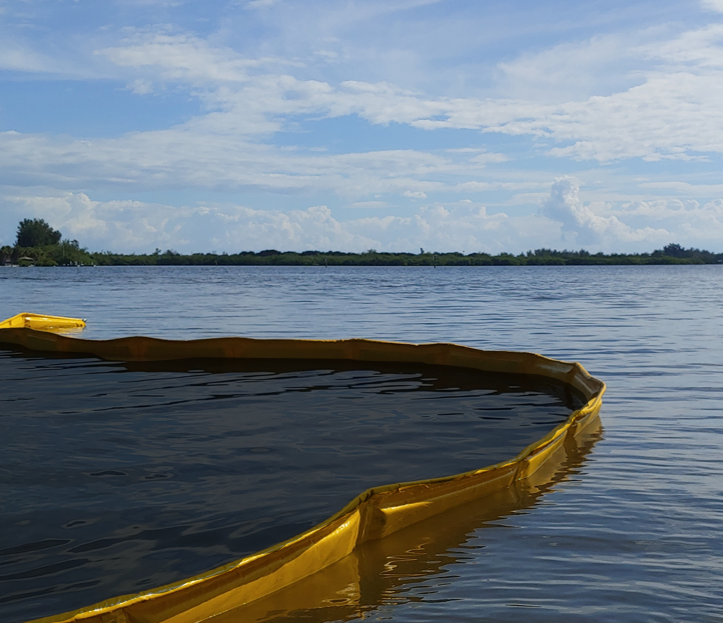Containment booms help stop oil from spreading and polluting shorelines and resources. They control the oil’s movement. Booms also concentrate oil in thicker surface layers, making recovery easier.
Booms can help move oil slicks in the water to make them easier to clean up. All booms follow the four basic elements:
- An above-water board to contain the oil and help prevent waves from splashing oil over the top of the boom
- A floatation device
- A below water skirt to contain the oil and help reduce the amount of oil lost under the boom
- A chain or cable supports the bottom of the skirt to make the boom stronger against wind and waves. This also helps keep the boom stable and upright. It can also help keep the boom stable and upright.
Booms can be divided into several types.
- Fence Booms are ineffective in rough waters because they have a high board and flat floatation device, where wave and wind can cause the boom to twist.
- Curtain Booms have a circular floatation device and continuous skirt. They can perform in rough water but can be more difficult to clean and store than fence booms.
- Inflatable Booms come in many shapes. They are easy to clean and to store, and they perform well in rough seas, but they are more complicated to use and can puncture easily.
All boom types are affected by the water conditions.
Booms can be fixed to a structure, such as a pier or buoy, or towed behind one or more vessels. It is necessary for booms to be monitored frequently due to changes in tides, tidal currents, winds, or other factors such as water depth, direction, and motion.
Please contact GEI Works today to learn about our containment booms.



